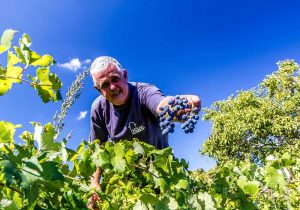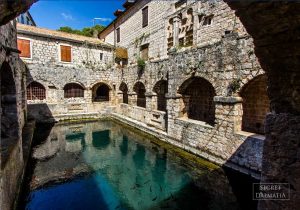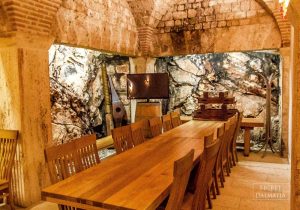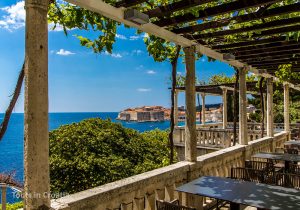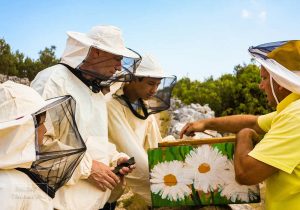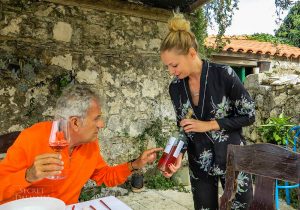
Each Tour in Croatia is an authentic, personalized, custom tailored experience in Croatia, not a packaged program
Tours in Croatia
The Best of Croatia by Secret Dalmatia!

Croatian Diversity
Bespoke travel experiences showing you the best of Croatia's divesity

Life and Culture in Croatia
Our tours offer a true immersion into the local life and culture of Croatia

Yachting
Unparalleled yachting experiences all over the Adriatic coast

Croatian Cuisine
Explore Croatian cuisine in private cooking classes in Split and Dubrovnik regions

History
Unveil the country's complex history in exclusive tours to Croatia's ancient sites

Countryside
Get active in Croatia's mountains, on Adriatic islands and in rugged Dalmatian countryside
Private Guided Tours
Secret Dalmatia – Tours in Croatia – started from our pure passion for discovering and preserving Croatia’s rich cultural and natural heritage. Intended for cosmopolitan, educated travelers who want more from a destination than just to tick off another spot on their world map, Secret Dalmatia is about experiencing and traveling in Croatia at its finest.
Destinations highlighted in our tours are often our personal favorites, places we feel the world should see in Croatia. From international stars like Dubrovnik Old Town, Hvar or Plitvice Lakes, to untamed landscapes of Cetina River or upcoming Istrian wineries, we try to show you both the beauties and the contradictions of our multifaceted country. Guided by unique individuals, our tours are distinguished by true local insights and unique experiences.
If traveling to Croatia and interested in unique, custom itinerary in Croatia, visit our travel in Croatia website: www.secretdalmatia.com or contact us at [email protected] with all your questions and comments.
What can I expect from a private tour in Croatia with Secret Dalmatia?
A private tour in Croatia with Secret Dalmatia offers an opportunity to discover the country’s most stunning and significant sights, curated just for you. With a private tour, you have the luxury of a tailored itinerary, personal attention, and the chance to explore the places that truly interest you.
What makes your tours of Croatia unique?
Our tours of Croatia are distinct because we offer experiences that go beyond the typical tourist routes. We believe in showing the real Croatia, including the lesser-known locations and attractions that make our country so unique. From exploring ancient sites to indulging in the local cuisine, our tours encompass the rich diversity of Croatia.
What regions can I explore in your tours in Croatia?
Our tours in Croatia cover all regions of our beautiful country. Whether it’s the medieval charm of Dubrovnik, the stunning Adriatic coast, or the vibrant energy of Split, we strive to ensure that you see the best of what Croatia has to offer.
Are your Croatia tours suitable for families or groups?
Yes, our Croatia tours are designed to cater to a wide variety of travelers, including families and groups. We can custom-tailor the itinerary to suit your preferences, ensuring a truly memorable Croatian experience for everyone involved.
What distinguishes your luxury tour of Croatia from others?
Our luxury tour of Croatia combines the best of cultural immersion, gastronomic delights, and awe-inspiring vistas. We ensure a high level of comfort and provide a personal guide to escort you through the stunning landscapes and historic landmarks that define our country.
Can I expect a bespoke travel experience with your Croatia tours?
Absolutely! At Secret Dalmatia, bespoke travel is our specialty. We believe that every journey should be as unique as the traveler, so we design our Croatia tours based on your interests and preferences, ensuring an unforgettable Croatian adventure.
How can I book a private Croatia tour with you?
Booking a private Croatia tour with Secret Dalmatia is straightforward. Simply visit our website or email us at [email protected]. We will work closely with you to tailor your perfect Croatian journey.
What is the highlight of your Croatia luxury tour?
The highlight of our Croatia luxury tour is the comprehensive experience we offer. We strive to ensure that you get to witness Croatia’s beauty, indulge in its rich cuisine, understand its complex history, and interact with its warm and welcoming people. Every part of the tour is carefully crafted to provide an unforgettable experience of luxury and authenticity.
How do you design a custom itinerary for a bespoke travel experience?
Our process for designing a bespoke travel itinerary begins with understanding your interests, travel style, and desired pace. We then recommend destinations, activities, and accommodations that align with your preferences. Our local knowledge and insider connections enable us to offer unique experiences that go beyond the typical tourist routes.
What types of tours does Secret Dalmatia offer?
Secret Dalmatia offers an array of unique tours designed to show you the diverse beauty and rich culture of Croatia. Our offerings include private guided tours, bespoke travel experiences, culinary tours, yachting experiences, and immersion into local life and culture.
Can I customize my tour of Croatia with your agency?
Absolutely! We specialize in creating personalized, custom-tailored experiences to suit your unique interests and preferences. Whether you’re interested in exploring historic sites, immersing in the local cuisine, or yachting around the Adriatic, we can tailor your itinerary to create your dream Croatian adventure.
What locations are included in your tours of Croatia?
Our tours span the entire country, from the international stars like Dubrovnik Old Town, Hvar or Plitvice Lakes, to the untamed landscapes of the Cetina River or the emerging Istrian wineries. We endeavor to show both the well-known beauties and the hidden gems of our multifaceted country.
What are your most popular tours in Croatia?
Our most popular tours range from private city tours in Dubrovnik, Split, and Zagreb, to culinary and wine tasting tours in Dalmatia and Istria, to yachting experiences along the stunning Adriatic coast. We also offer unique cultural immersion tours that allow you to experience the authentic local life.
Do you cater to any dietary restrictions during your culinary tours?
Yes, we strive to cater to all dietary restrictions and preferences. When you book a tour, particularly one of our culinary tours or cooking classes, please inform us of any dietary needs so we can ensure a seamless and enjoyable experience.
What should I bring with me on the tour?
We recommend comfortable walking shoes, a hat, and sunscreen for tours that involve outdoor activities. Don’t forget your camera to capture the incredible sights! Each tour might have specific recommendations, which will be shared with you upon booking.
What is your cancellation policy?
Our cancellation policy varies depending on the specific tour and will be clearly outlined in your booking confirmation. Rest assured, we aim to offer as much flexibility as possible to cater to our guests’ needs.
Why should I choose Tours in Croatia for my Croatia tour?
Choosing us means choosing a truly authentic experience. With us, you’re not just ticking off another spot on your map, you’re embarking on a unique journey filled with local insights and experiences. Our goal is to let you discover the Croatia we love, beyond brochures and beyond the expected.
What sets Secret Dalmatia apart from other travel agencies?
What truly sets us apart is our commitment to creating original, bespoke travel experiences that go beyond typical tourist paths. We aren’t just another travel agency; we’re a team of passionate locals who have explored every corner of our beloved country and handpicked the most fascinating experiences for our clients. Our deep knowledge of Croatia, combined with our dedication to impeccable service, ensures a travel experience unlike any other. Whether it’s a private tour in the bustling city or an intimate encounter with Croatian culture in a remote village, we deliver Croatia at its finest.


